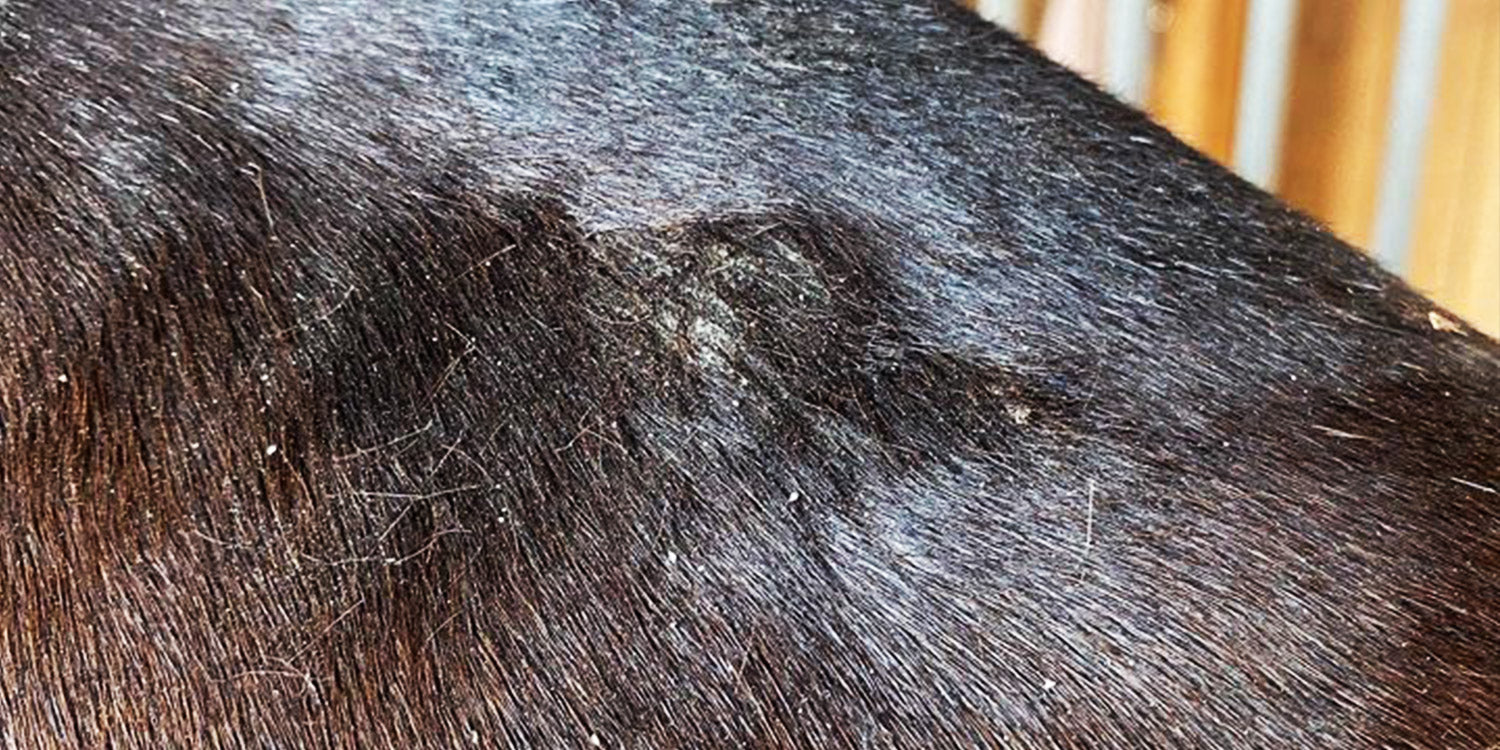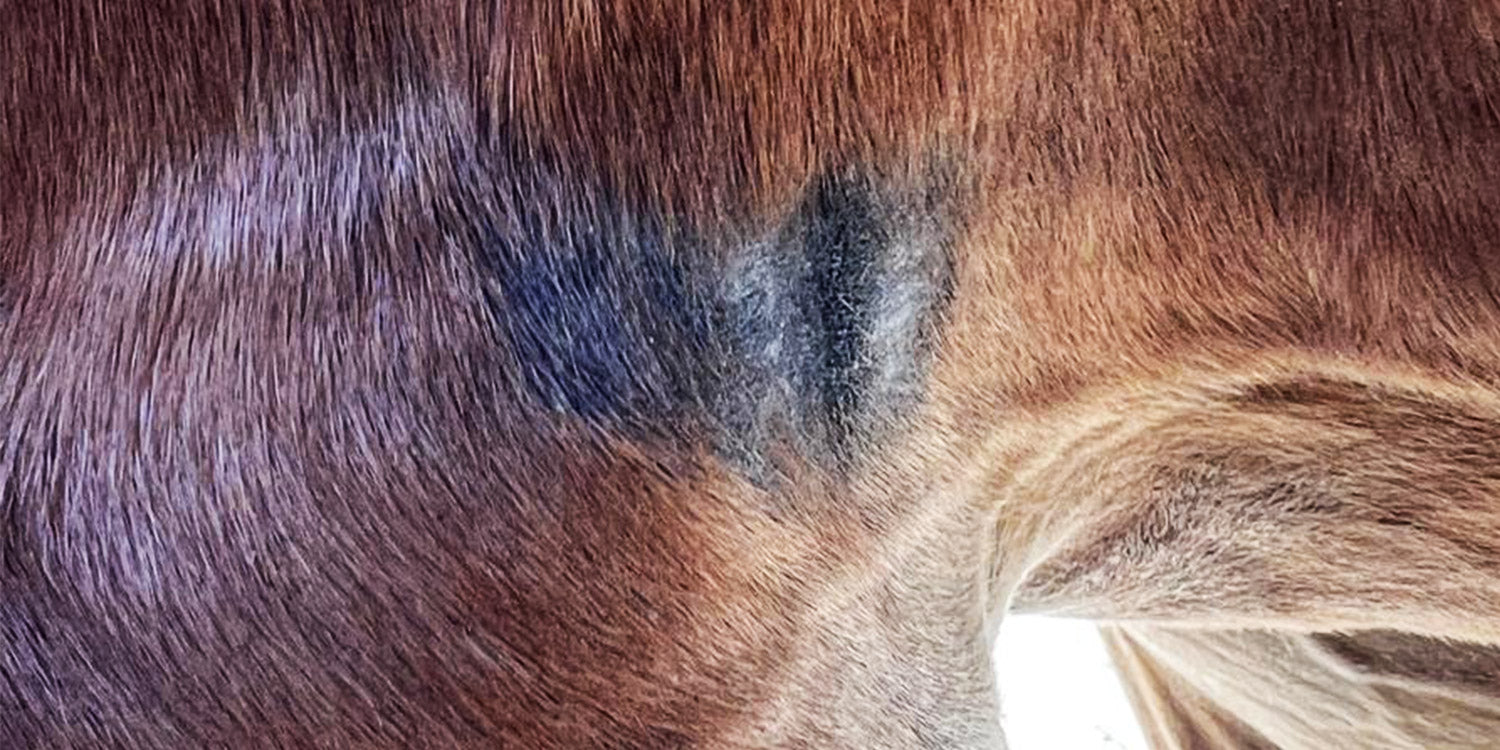Article: Horses with inflamed sebaceous glands - what to do?

Horses with inflamed sebaceous glands - what to do?
- Appearance: Inflamed sebaceous glands usually appear as raised, red or swollen areas on the horse's skin. These areas may be accompanied by hair loss, flaky skin, or pustules.
- Causes: Inflamed sebaceous glands can have a variety of causes, including bacterial or fungal infections, allergies, hormonal imbalances, or genetics. It can also be associated with certain systemic diseases.
- Prevention: Although some causes of inflamed sebaceous glands are genetic or difficult to prevent, there are some steps you can take to minimize the risk: Regular grooming, including proper cleaning of the horse's skin and coat, can help , to prevent the accumulation of dirt, debris and bacteria that can lead to skin problems. A healthy diet and treating underlying medical conditions can also help prevent it.
- Treatment: Treating inflamed sebaceous glands usually involves addressing the underlying cause. This may include using topical or systemic medications such as antibiotics or antifungals to fight infections. If there is a hormonal imbalance, hormone therapy may be recommended. It is important to consult a veterinarian to make an appropriate diagnosis and treatment plan tailored to the horse's specific needs.
- Environment: In addition to treating the underlying cause, managing the horse's environment can help relieve symptoms and prevent recurrence. This may include keeping the horse's habitat clean and free of irritants, using appropriate grooming practices, and providing a balanced diet with appropriate nutrients.
- Possible risks: Inflamed sebaceous glands can cause discomfort and skin irritation in horses. If left untreated or if the underlying cause is not addressed, it can lead to further complications such as: B. secondary skin infections or the development of more serious skin diseases.
What can alpaca fleece contribute to healing as a saddle pad or as a girth protector?
- Softness and comfort: Alpaca fleece is known for its exceptional softness, which can give the horse a more comfortable feeling. If the sebaceous glands are inflamed, a soft and gentle surface on the affected area can help relieve discomfort and reduce irritation.
- Moisture management: Alpaca fleece has good moisture-wicking properties, meaning it can absorb and release moisture efficiently. This can help keep the saddle girth or saddle area dry and minimize the accumulation of sweat or moisture that could worsen or contribute to skin problems.
- Breathability: Alpaca fleece allows air to circulate and thus promotes ventilation in the girth or saddle area. Improved air circulation can help reduce heat and moisture buildup, which can be beneficial in preventing or treating skin problems.
- Hypoallergenic Properties: Alpaca fleece is generally considered hypoallergenic because it does not contain lanolin, a common allergen found in sheep's wool. For horses prone to skin allergies or sensitivities, using alpaca fleece in the girth or saddle area can help reduce the risk of further irritation or allergic reactions.
- Protection: Alpaca fleece can form a protective layer between the girth or saddle and the horse's skin. This extra padding and cushioning can help distribute pressure more evenly and reduce the risk of friction, chafing, or pressure points that can contribute to or worsen skin conditions.
Although there may be potential benefits to using alpaca fleece in the girth or saddle area, it is important to note that each horse may react to it differently. It is important to closely monitor the horse's condition and consult a veterinarian for an accurate diagnosis and appropriate treatment plan for any existing skin problems. The use of alpaca fleece should be considered as part of a comprehensive management strategy and in conjunction with veterinary advice.

